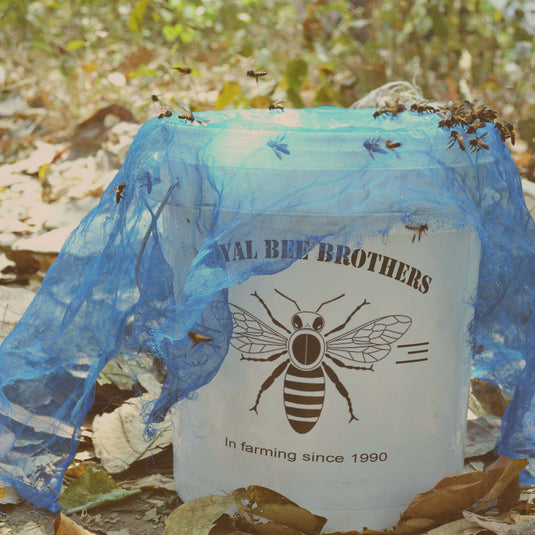Unfortunately, there are many instances where honey is adulterated or diluted with other substances, which can affect its quality and nutritional value. Here are 21 ways to test for adulteration of honey in your own home:
-
Water test: Mix one tablespoon of honey with one tablespoon of water. If the honey dissolves easily, it may be adulterated with water.
-
Finger test: Rub a small amount of honey between your fingers. If it feels sticky, it may be adulterated with corn syrup or other sugars.
-
Flame test: Dip a matchstick in honey and light it. If the honey ignites easily, it may be adulterated with alcohol or other flammable substances.
-
Bread test: Spread a small amount of honey on a slice of bread and wait for it to dry. If the bread becomes hard and crumbly, the honey may be adulterated with sugar.
-
Vinegar test: Mix a small amount of honey with vinegar. If it foams, it may be adulterated with baking soda or other alkaline substances.
-
Microwave test: Heat a small amount of honey in a microwave-safe container for 30 seconds. If it boils, it may be adulterated with water.
-
Salt test: Add a pinch of salt to a tablespoon of honey. If it dissolves easily, it may be adulterated with water.
-
Paper test: Put a drop of honey on a piece of paper. If it spreads out quickly, it may be adulterated with water.
-
Purity test: Mix equal amounts of honey and ethanol. If the honey dissolves completely, it may be adulterated with water.
-
Nitric acid test: Mix equal amounts of honey and nitric acid. If the honey turns yellow, it may be adulterated with starch.
-
Fiehe’s test: Add a few drops of Fiehe’s reagent to honey. If it turns red, it may be adulterated with starch.
-
Cobalt chloride test: Add a few drops of cobalt chloride to honey. If it turns blue, it may be adulterated with glucose or other sugars.
-
Copper sulfate test: Add a few drops of copper sulfate to honey. If it turns blue, it may be adulterated with glucose or other sugars.
-
Acetone test: Mix equal amounts of honey and acetone. If the honey dissolves easily, it may be adulterated with water.
-
Chloroform test: Mix equal amounts of honey and chloroform. If the honey dissolves easily, it may be adulterated with water.
-
Carbon dioxide test: Add a few drops of hydrochloric acid to honey. If it fizzes, it may be adulterated with baking soda or other alkaline substances.
-
Iodine test: Add a few drops of iodine to honey. If it turns blue, it may be adulterated with starch.
-
Starch test: Add a few drops of iodine to honey. If it turns blue-black, it may be adulterated with starch.
-
Sugar test: Mix a tablespoon of honey with hot water. Add a few drops of Benedict's reagent. If it turns green, it may be adulterated with sugar.
-
Heat test: Heat a small amount of honey in a pan. If it caramelizes quickly, it may be adulterated with sugar.
-
Density test: Measure the density of honey using a hydrometer. If the density is too low, it may be adulterated.
While these tests that can be used to determine if honey is adulterated or not, it's important to note that not all honeys will necessarily fail or pass these tests. Here are a few reasons why some honeys may not produce accurate results when tested at home:
-
Quality of equipment: The accuracy of home tests for honey adulteration can vary based on the quality of the equipment used. For example, a hydrometer used to measure the density of honey may not be calibrated correctly, leading to inaccurate results.
-
Honey variety: Different types of honey can have different properties that affect their behavior during testing. For example, some honeys may have a lower density than others, which could make them appear adulterated when tested with a hydrometer.
-
Natural variations: Honey is a natural product, and there can be natural variations in its composition that affect its behavior during testing. For example, honey from different flowers or regions may have different properties that affect its reaction to certain tests.
-
Adulteration methods: Some adulteration methods are designed specifically to avoid detection by common home tests. For example, adding water to honey in small increments over time can make it difficult to detect using the water test.
-
Sensitivity of tests: Some home tests for honey adulteration are more sensitive than others and may produce false positives if not used correctly. For example, the iodine test can produce a blue color even in pure honey if too much iodine is added.
Overall, it's important to use a combination of different tests and to use them carefully and correctly in order to get the most accurate picture of whether or not honey is adulterated. If there is any doubt about the purity or quality of a particular honey, it's always best to consult with a professional lab for testing.


